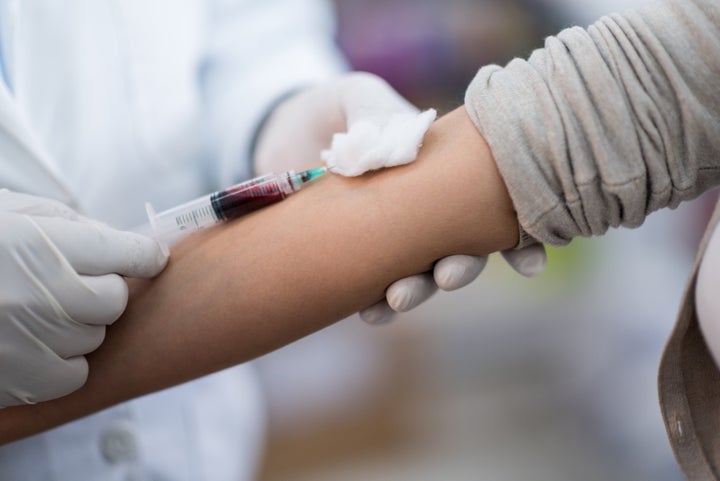A blood test could reveal the likelihood of a pregnancy ending in miscarriage, a new study suggests.
Scientists at the Glasgow Centre for Reproductive Medicine studied hormone levels in nearly 2,000 pregnant patients who had been through IVF.
They found low levels of the hormone βHCG (Beta-human Chorionic Gonadotrophin) were linked to an increased risk of miscarriage.
“The βHCG level gives us a clear guide, helping us to counsel patients about the likelihood of a miscarriage, which in turn will help us to better prepare patients psychologically and emotionally,” said Marco Gaudoin, from GCRM, according to the Telegraph.

In the study, when hormone levels in the woman’s blood were below 30 units per litre, they only had a 2% chance of a successful pregnancy.
A level of 30 to 40 units of the hormone per litre gave a 24% chance of a not miscarrying.
If women had 50 to 70 units per litre of the hormone, they had a 52% chance of a successful pregnancy.
More than 70 units gave women a 86% chance of not miscarrying.
Ruth Bender Atik, from the Miscarriage Association, said, according to The Sun: “These results mean that IVF patients and clinicians now have the opportunity to learn more about the likely outcome of treatment beyond the joyful news of a positive pregnancy test.
“That development is to be welcomed as long as it is managed sensitively, with patients able to make an informed choice regarding testing.”
This isn’t the first time research has shown a test could predict the risk of miscarriage.
In July 2011, a research team at St Mary’s Hospital in Manchester, found that a urine check test could predict this.
The research team studied a smaller sample of 112 women at risk of miscarriage, all between six and 10 weeks pregnant.
Doctors found they could predict the outcome of nine out of 10 pregnancies by measuring the amount of bleeding the pregnant mums were suffering and looking at the levels of pregnancy hormone in the blood and in their urine.
Dr Kaltum Adam, who led the study, said: “This research has, for the first time, offered us a robust tool to begin to attempt to rescue pregnancies threatening to miscarry when, currently, all we can do is fold our hands and hope for the best.”